 |
|
 |
 |
Poison Ivy
Toxicodendron rydbergii
(formerly Rhus radicans) |
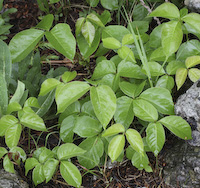 Other common names:
Climbing Poison Ivy Other common names:
Climbing Poison Ivy

Other scientific names:
Rhus radicans, Toxicodendron radicans

Family:
Cashew Family (Anacardiaceae)

Group:
Poison Ivy & Poison Sumac

Distinctive features:
ShrubSub-Shrub; A low shrub, a climbing vine, or a larger shrub. Compound leaf with 3 leaflets. Poisonous to touch - causes a rash in many people.

Similar species:
•
... - See the look-alikes page.
•
Poison Sumac (Toxicodendron vernix)
•
Poison Ivy (Toxicodendron radicans) - Climbs by means of aerial roots. Leaflets flat when young. Petioles pubescent.

Flowers:
Spring; Green/Brown; 5 parts (petals)

Leaves:
Alternate, Compound, Toothed, Entire; Compound, alternate, 3 leaflets. Poisonous to touch - causes a rash, sometimes serious, in many people. The leaflets vary greatly, and as a result Poison Ivy is sometimes misidentified as Posion Oak (which grows in British Columbia).

Height:
Up to 2 m (1-6 ft); Varies from a low sub-shrub to a 5-6 foot high shrub to a climbing vine.

Fruit/Seeds:
Fruits are hard white berries, that persist on the plant through winter.

Habitat:
Forests, Fields and Open Areas; Forests, open areas, rocky areas.

Poisonous:
Poisonous to touch.

Books:
Newcomb's Wildflower Guide: 330
Trees in Canada: 229
Shrubs of Ontario: 277

Native/Non-native:
Native

Status:
Common.

Notes:
Poison Ivy has recently been split into two distinct species. For the moment, this page includes both without distinguishing between them.
Poison Ivy (Toxicodendron rydbergii) has leaflets that are somewhat folded, petioles are glabrous, and it doesn't climb. Extends farther north.
Poison Ivy (Toxicodendron radicans) has leaflets that are flat when fresh, petioles are pubescent, and it may climb.

Origin and Meaning of Names:
Scientific Name: radicans: rooting

See Also:
•
Poison Ivy Cures
•
Poison Ivy Look-alikes

For more information visit:
Ontario Wildflowers
,
Ontario Trees and Shrubs

Photographs:
84 photographs available, of which 20 are featured on this page. SCROLL DOWN FOR PHOTOGRAPHS.

 |
 |
|
|
|
|
|
|
|  |
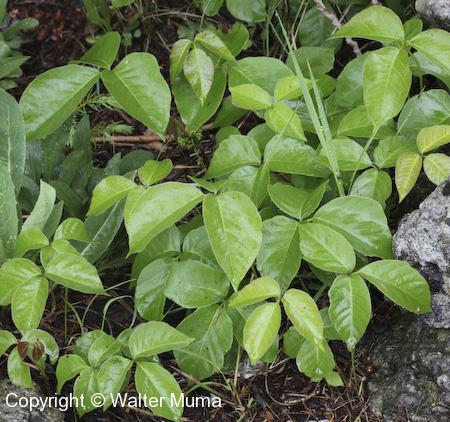
leaves
|
 |
Typical Poison Ivy leaves. |
|
 |
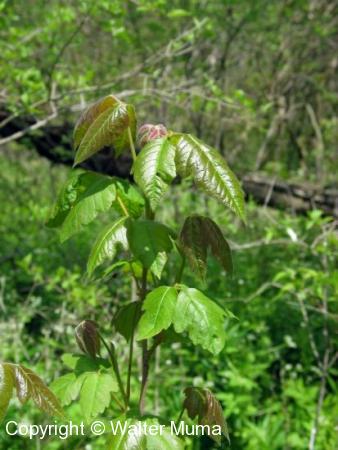
|
 |
Fresh Poison Ivy leaves in May. They are the most potent at this time. |
|
 |
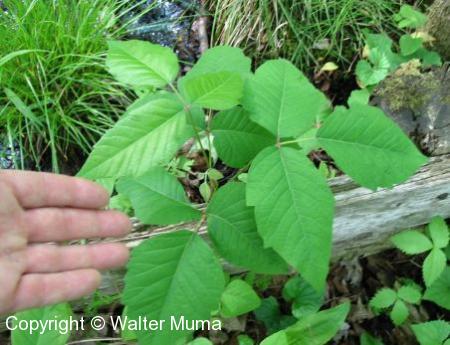
|
 |
Poison Ivy in the summer. |
|
 |
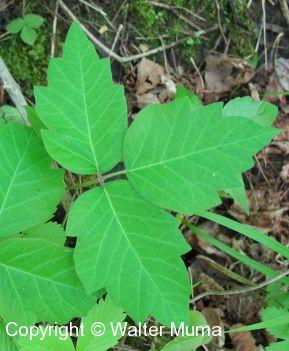
|
 |
A closer look at the leaves. Note that the leaves are sometimes toothed and sometimes smooth-edged. |
|
 |
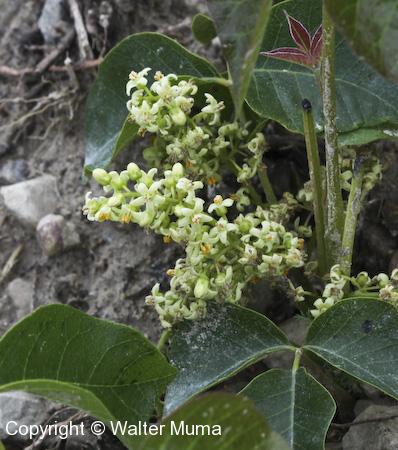
|
 |
Poison Ivy flowers. |
|
 |
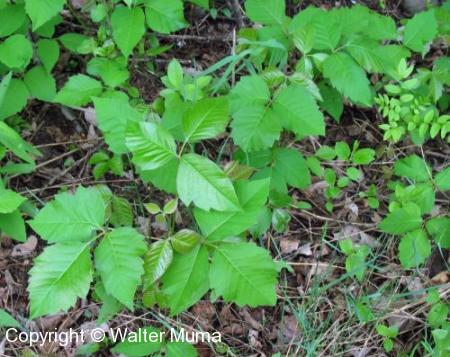
|
 |
The leaves are sometimes shiny, particularly in the spring. |
|
 |
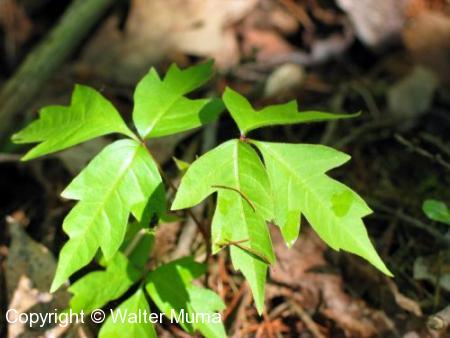
|
 |
The leaves can vary a lot, as shown here.... |
|
 |
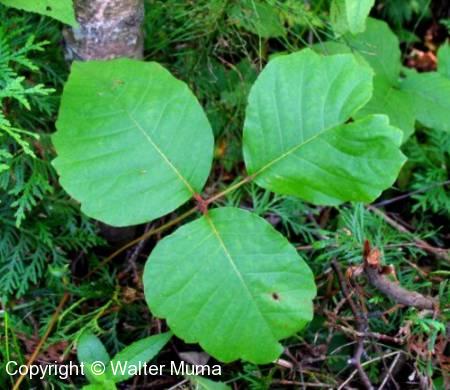
|
 |
And here...these leaves are almost round! Yup, same species! |
|
 |
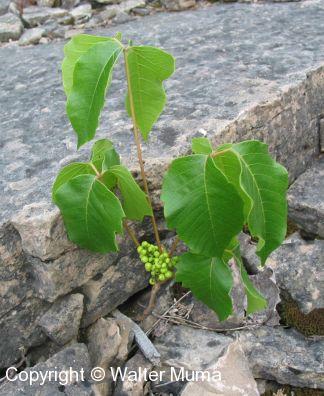
|
 |
This plant is growing in a rocky area, a favourite habitat of Poison Ivy. Note the developing white berries. Also note that this plant is growing in a very different form that the one shown in the above two photos. This plant's leaves are droopy, glossy, and fairly smooth-edged. The one above has dull leaves, toothed edges, and aren't drooping. |
|
 |
|
|
 |
|
|
 |
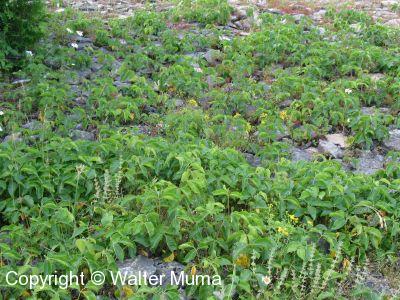
|
 |
A colony of Poison Ivy in a rocky area. It grows up from suckers it sends out, so it often carpets a small area. |
|
 |
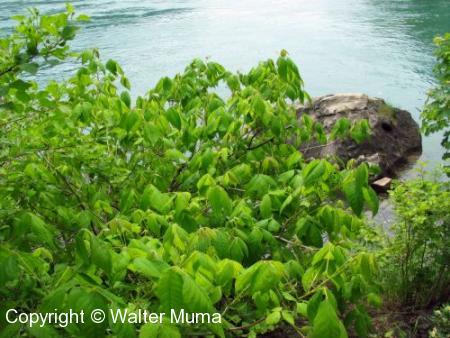
|
 |
Poison Ivy can also assume a shrublike form, as seen here. |
|
 |
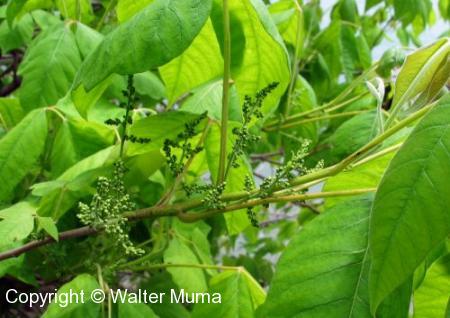
|
 |
Flower buds, still unopened (June). |
|
 |
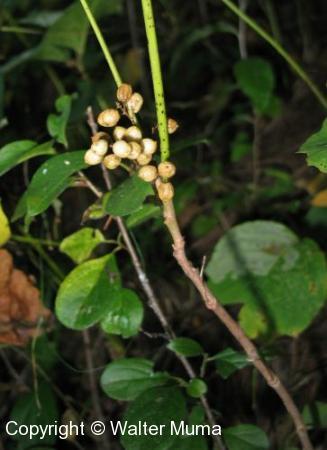
|
 |
Berries in September. They are white and hard. But don't try eating them! |
|
 |
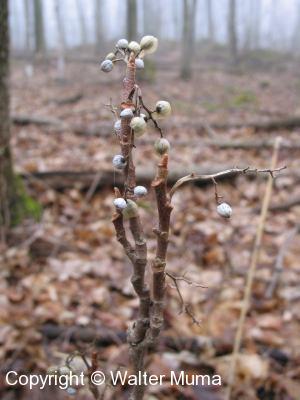
|
 |
Here's a photo of Poison Ivy berries at the end of winter. They sometimes stay on the plant all winter. Note that there aren't really any other noticeable identifying features at this time of year. Only some Poison Ivy plants will retain berries through the winter. They fall off, and birds eat them. Yet it is said that the plant remains poisonous even through the winter. However, the amount of oils in the plant at that time is probably greatly reduced, and poisonings in this season are rare. |
|
 |
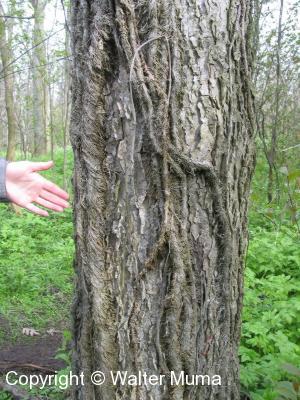
|
 |
In more southerly areas (southern Ontario and south) Poison Ivy becomes a vine and climbs trees. It attaches to the tree with numerous fine rootlets. The tree shown here has several Poison Ivy vines climbing it. This picture was taken in the spring before any leaves have come out, in Point Pelee National Park. |
|
 |
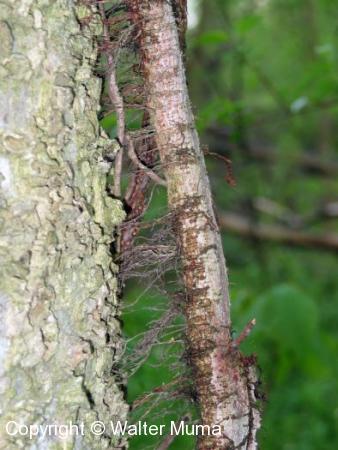
|
 |
This shows the thread-like roots that hold Poison Ivy to the tree (or other support) that it climbs. |
|
 |
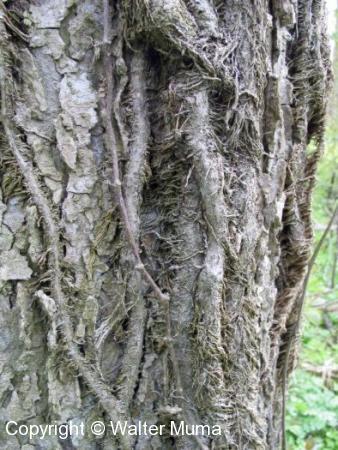
|
 |
Close-up of these roots. |
|
 |
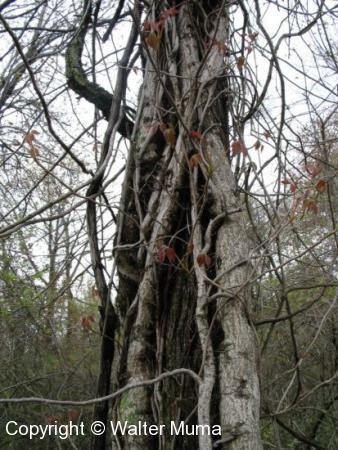
|
 |
Sometimes when it climbs as a vine, it sends out long horizontal "branches". These appear very similar to thin tree branches. Therefore, when in the presence of a tree that Poison Ivy is climbing, be aware of this potential point of contact - you may think you are grabbing a tree limb, but in fact it may be a Poison Ivy "limb"!! This photo doesn't show this very well, but I don't have any others at the moment... However, most of the small branches in this photo, particularly in the lower 2/3, are in fact Poison Ivy "branches". |
|
 |
|
|  |
 |
|
| | |
|